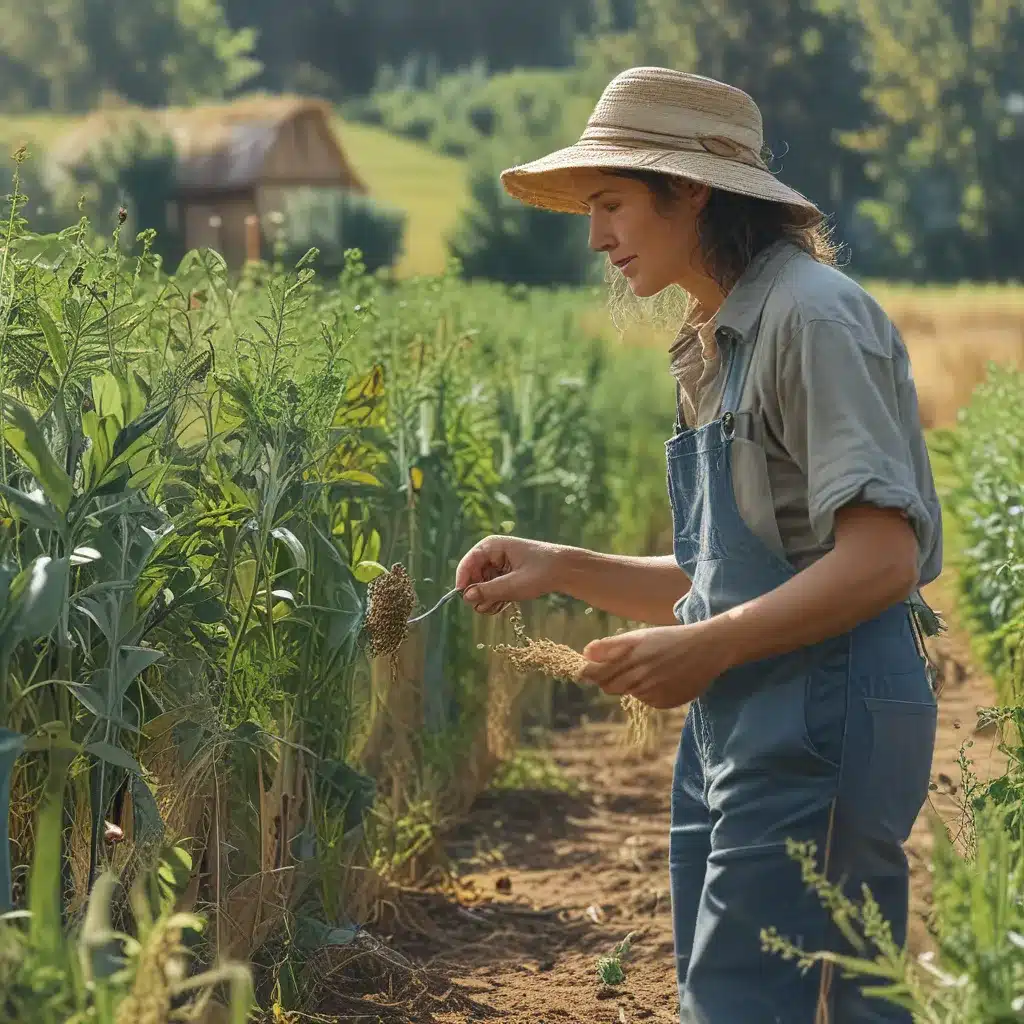
The Transformative Power of Composting
As a lifelong organic farmer, I’ve always been fascinated by the hidden wonders of the soil. It’s like a vast, underground universe teeming with life – microbes, fungi, and a whole ecosystem of critters working together to nourish the plants above. And at the heart of this vibrant, living soil is the magical process of composting.
Composting is nature’s way of recycling. It takes all those scraps and leftovers – the carrot tops, eggshells, and coffee grounds – and transforms them into nutrient-rich humus that can breathe new life into the soil. It’s like a giant, earthy cauldron where organic matter is broken down and reborn as a dark, crumbly substance that’s the backbone of any thriving, sustainable farm.
As the good folks at Civil Eats explain, composting doesn’t just enrich the soil – it also improves its structure, making it more spongy and able to hold onto precious moisture. This is a game-changer in an age of drought and water scarcity. Instead of relying on thirsty irrigation, the soil can soak up rainfall and retain it for the plants to use. It’s like a natural water tower, storing up that liquid gold for when the crops need it most.
But the benefits of composting don’t stop there. It also helps suppress weeds, which means fewer chemicals and less back-breaking labor for the farmer. And the real kicker? Compost is a breeding ground for all sorts of beneficial microbes and fungi that work in symbiosis with the plant roots, unlocking nutrients and fending off pests and diseases. It’s like having an army of invisible helpers toiling away in the soil, making sure your crops thrive.
Cover Cropping: Nature’s Blanket for the Soil
Now, if composting is the heart of sustainable farming, then cover cropping is the lungs. These non-cash crops that are grown between harvest seasons or alongside your main crops are like a living, breathing blanket for the soil. As the folks at LinkedIn explain, cover crops protect the soil from erosion, suppress weeds, and even fix nitrogen – reducing the need for synthetic fertilizers.
I’ll never forget the first time I tried cover cropping on my little plot of land. It was like watching a miracle unfold before my eyes. One minute, the soil was bare and vulnerable, just begging to be washed away by the next heavy rain. But then I seeded it with a lush mixture of clovers, rye, and vetch, and within a few weeks, it was like a verdant carpet had been laid down. The leaves and stems of the cover crops shielded the soil from the elements, while their roots worked their magic underground, anchoring the earth and building up that precious organic matter.
And the best part? When it came time to till those cover crops back into the soil, it was like unlocking a treasure trove of nutrients. The legumes, like the clover and vetch, had been busy fixing nitrogen from the air and storing it in their roots. So instead of having to shell out for expensive, synthetic fertilizers, I could just let nature do the work for me. It’s a win-win for the bottom line and the environment.
Integrated Nutrient Management: A Holistic Approach to Soil Health
But sustainable farming isn’t just about composting and cover cropping – it’s about taking a holistic, integrated approach to nurturing the soil. And that’s where the concept of integrated nutrient management comes into play.
As the LinkedIn article explains, this approach combines the use of organic and inorganic sources of plant nutrients to create a balanced, thriving ecosystem in the soil. It’s not just about dumping a bunch of chemical fertilizers and calling it a day. Instead, it’s about carefully managing the entire nutrient cycle, from the decomposing organic matter to the availability of key minerals and trace elements.
One of the key principles of integrated nutrient management is to minimize the use of synthetic inputs and maximize the utilization of on-farm resources. So instead of relying on those energy-intensive, fossil fuel-based fertilizers, we can tap into the wealth of nutrients already present in our compost, cover crops, and even the animal manure from our livestock. It’s like a grand, ecological dance, with each element of the farm ecosystem playing a vital role.
And the results speak for themselves. By taking this holistic, integrated approach, we’re able to build up the long-term fertility of the soil, making it more resilient and less dependent on external inputs. It’s a virtuous cycle where the soil becomes healthier and more productive, year after year. And of course, all of this translates to better-tasting, more nutritious produce for the Thornappple CSA members who entrust us with their food.
Unlocking the Secrets of Sustainable Farming
At the end of the day, sustainable farming is all about working in harmony with nature, not against it. It’s about tapping into the wisdom of the soil, respecting the cycles of life, and cultivating a deeper understanding of the intricate web of relationships that sustain our food system.
Sure, it might take a little more time and effort than the conventional, industrial approach. But the payoff is immense – not just in terms of the quality and nutritional value of the food we produce, but in the long-term health and resilience of the land itself.
So whether you’re a seasoned organic farmer or a curious CSA member, I encourage you to dive deeper into the secrets of sustainable farming. Explore the wonders of composting, the magic of cover cropping, and the holistic dance of integrated nutrient management. Because when we unlock these ancient, time-tested techniques, we don’t just grow better food – we grow a better future for all.



